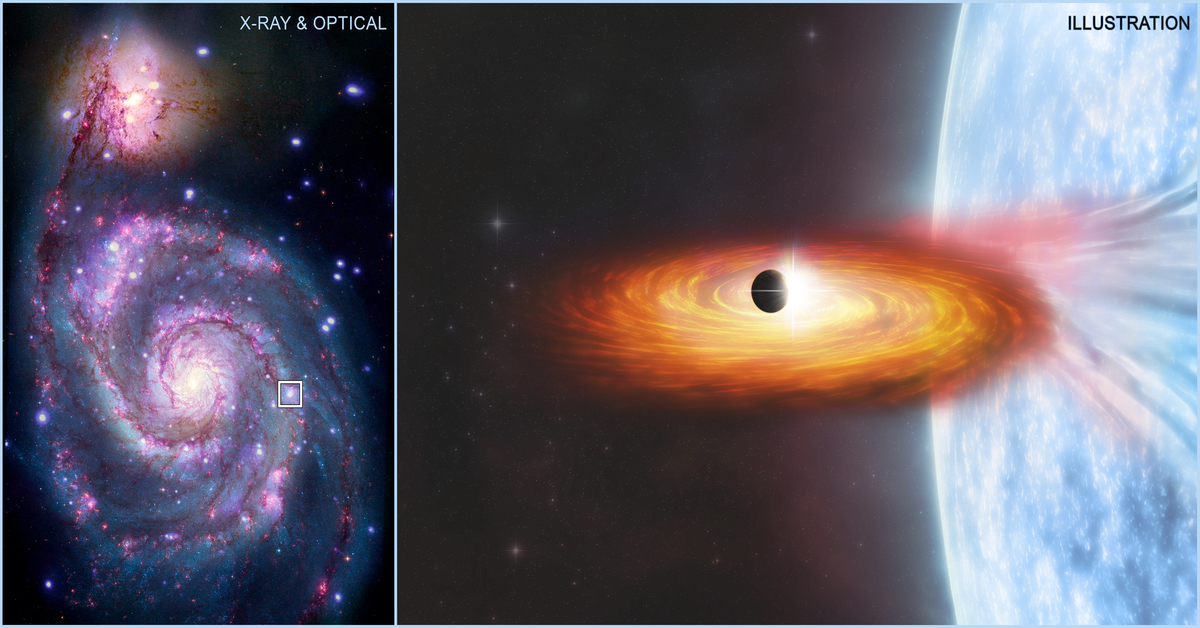It hasn’t been very long since humans stumbled upon the first exoplanet – a planet that orbits a star outside our Solar System. We live in a remarkable time in history, where in the span of a single generation, the age-old question “Are there planets orbiting other stars?” can be answered with a resonant “Yes!!!”
Of all the 4,000 exoplanets discovered since the 1990s, every single one of them shares a common denominator: they’re all located in the Milky Way, the galaxy we call home.
But here comes the scientific breakthrough: astronomers might have found the first exoplanet in another distant galaxy.
A tale millions of light-years away.
It began some 28 million years ago in the distant M51 Whirlpool galaxy. There lies the M51-ULS-1 X-ray binary star system. One of the stars, a blue supergiant star, was not having the time of its life. It was caught up in a gravitational dance with a ravenous partner – most likely a neutron star or a black hole – whose gravity was so immense, it was literally sucking the life (and light) out of the supergiant’s exterior. In the one-sided battle, plasmas from the star were flung away, resulting in epic X-rays glowing a million times brighter than our sun.
Then, sandwiched between the bright X-rays and our solar system, an object whizzed past and blocked the rays from our view for several hours. Considering the extreme distance of the Whirlpool galaxy (265,000,000 trillion kilometres), that dip in the X-ray signal, caused by the object blocking the X-rays from its star, was only picked up by NASA’s Chandra X-ray Observatory and the European Space Agency’s (ESA) XMM-Newton telescope in 2012. Now a team of astronomers is inferring that the mysterious object could have been a planet — among the most distant ever discovered.
Published in Nature Astronomy, a team of scientists led by Dr Rosanne Di Stefano from Harvard University think that M51-ULS-1 may host a Saturn-size planet, which they affectionately call M51-ULS-1b. From their findings, the planet may orbit as far from its stars as Uranus does from our sun.
Shining light on more distant exoplanets.
Though the existence of M51-ULS-1b is still unconfirmed and may take decades for astronomers to observe another transit, Dr Di Stefano’s study opens up a whole new arena to hunt for exoplanets in distant galaxies using X-ray wavelengths.
By looking at X-rays, other astronomers across the globe will be able to spot more far-flung exoplanets using the transit method – currently the most established exoplanet-hunting technique. Detecting the slight but measurable dip in a star’s brightness as a planet crosses it, astronomers have been able to locate more than 2,500 exoplanets to date.
Exciting times lie ahead as more powerful space telescopes such as the James Webb Space Telescope await “first light“. Look out for the ESA’s PLATO too. Slated for a 2026 launch, PLATO will chiefly be used for discovering and characterising exoplanets. What will these state-of-the-art scientific instruments unravel? We can’t wait to find out!






























